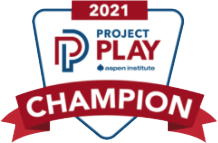



Coach and Player Development
Featuring Coach and Player Education Manager at Glasgow Rangers FC, Neil Mackintosh.
Neil Mackintosh is the Coach and Player Education Manager at Glasgow Rangers FC. His role is key in the development of the coaching staff and the curriculum across the whole Academy program. Previously, Neil served as the Performance Development Manager and U14 – U17 Scotland boys national team coach with the Scottish Football Association. Other roles, Head of Youth Development at the SFA, Academy Manager at Ross County FC Scottish Football Association, and Regional Manager (North Region) at the SFA.
“The great coaches are learners who are obsessed with giving you the tools and support to make yourself a little better every day.” – Doug Lemov, The Coaches Guide to Teaching
An approach to more guided coaching
Science has redefined how young people best learn resulting in a paradigm shift towards an approach that harnesses the learning process more effectively. We are now seeing clubs approach training with a more guided approach in contrast with a more authoritative approach. Rangers F.C is shifting their training methodology in this way as well.
“In Scotland, you very often get coaches on the sideline at games directing; lots of shouting, lots of motivation, lots of hustle, lots of information. The leadership felt that we wanted to give more ownership to the players. We wanted to dial back on that.”
Question and Answer
Neil discusses the leadership’s push towards coaches uses more question and answer in their training sessions. Neil says:
“It became really apparent that it was really effective, especially for young players. There was a culture that as people progressed to full-time football they were basically told what to do. And it was this idea, ‘why are we asking 10-year-olds or 12-year-olds, giving them ownership, giving them responsibility, self-awareness, and when they become a full-time athlete you take all that away… What became really apparent the use of question and answer, giving ownership should go all the way through our academy. So you have a self-monitoring athlete.”
Active vs. Inactive time
Neil touches on the importance of changing coaching methods to increase the amount of active time (the time a player is playing). Rangers F.C challenges their coaches with some suggestions to implement into their coaching to increase their ‘ball rolling time’:
- Start all games with scenarios
- Maximum of 13 coaching interventions throughout the whole session
- Keep all coach player interactions below 19 seconds
Keep in mind that these challenges were not based on anything and specific to the Rangers’ context. However, what is important to mention is every coach could observe what their average active time is and create similar challenges to improve within their own context.
What Neil found is with more and more use of these kinds of constraints, players began to take more ownership in the session and their learning. He also notices that coaches relied more on the situations they created rather than the knowledge they bestowed upon them, which also resulted in more ownership.
Ghost Coaching (use of counter principle coaching)
Neil explains Ghost Coaching as a secondary coach who coaches the ‘other side of the ball’. For example, if the training objective is creating a build-up, then the secondary coach guide the defenders who are pressing to try to stop the build-up. This is what is called coaching the counter-principle. The idea is by coaching the counter principle you force the players who are developing the ‘main’ principle to be better and have to improve. This is a great way to coach using the game and increasing the active time.
Coach (Self)-Development
Rangers, like CRYSC, believe that by developing their coaches to deliver the best possible learning environment, they will inevitably develop their players more effectively. They rely on a few tools to help coaches improve.
Coach Planning
On top of having prepared the training session where you are deliberate about your session choice, Neil asks Rangers coach to think about the following:
- Create a noticing plan for the first 11 minutes of the session. What will you observe?
- Ask five players, ‘How can I help you today?”
- Create game with different levels to challenge and support players.
These are just a few thoughts that you could bring into your training session. Most importantly, it’s important that you ask yourself, ‘What can you do for your players to help them achieve more?”
Reflection
As with all learning, it’s essential to evaluate yourself after the session. This can be done individually but ideally this is done with a Director of Coaching or another colleague. The options about how to reflect are endless but what is most important is that you are able to view your work objectively with the sole focus being on your improvement. Neil provides many examples on how to reflect. For example, after the session write out a short reflection with 2-3 areas of improvement and positive areas. Additionally, you could keep data, like active time and coach-player interaction lengths and try to improve those for the following session.
CRYSC Final Thoughts
With Neil’s presentation, we see the shift towards a methodology that gives the player ownership. In doing this, we help players develop the whole spectrum of skills needed to be the best soccer player they can be.



